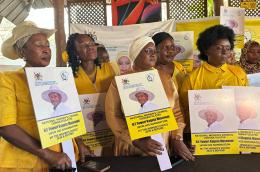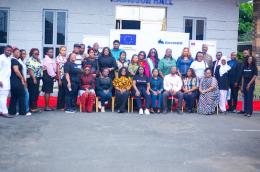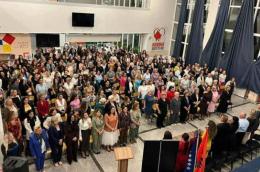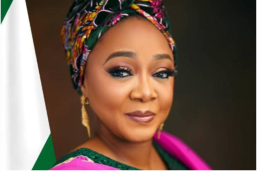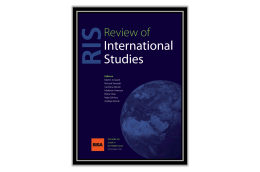Women's Leadership
Main navigation
Women leaders under the National Women’s Council have appealed to all stakeholders in Uganda’s electoral process to champion peace and prevent acts of violence during and after the forthcoming elections.
Addressing the media in Kampala, National Chairperson Faridah Kibowa emphasized that women and children often bear the heaviest impact of election-related conflicts.
“As women, we stand to advocate for peace because any form of violence directly affects us more, and it is our families that suffer most,” Kibowa said.
The leaders highlighted that violent episodes frequently result in displacement, lack of shelter or food, and exposure to gender-based violence.
Women face an uphill battle to political election, and they continue to confront barriers to success afterward. But the type of legislature in their states can make a difference.
A new study from Virginia Commonwealth University researcher Jatia Wrighten, Ph.D., and colleagues finds that women are more effective lawmakers than men when serving in professional state legislatures, which are generally in session full-time, than when serving in part-time legislatures that have lower barriers to entry, lower salaries and fewer staff.
Once elected, women in professional legislatures are often more effective even when given less notable committee assignments, Wrighten finds. She said that means that voters in general are better served by professional legislatures, where more diverse voices, including those of women, are represented. Wrighten, an assistant professor in VCU’s Department of Political Science in the College of Humanities and Sciences, recently spoke about her findings, which were published in The Journal of Politics.
What does it mean for a state legislator to be effective?
Legislative effectiveness can be measured in several ways. In our article, we measure legislative effectiveness by the lawmaker’s ability to “act for” their constituents in policymaking. In other words, are women able to have their voices heard in legislatures, does their committee work matter, and do resources constrain them due to the level of professionalism in the legislature?
What roadblocks do women face before and after election?
As one can imagine, living in a patriarchy, women who run for office face sexism, which manifests in many ways. Many voters hold women to a higher standard than men who run for office and do not see them as leaders. Women running for office have been critiqued on their physical appearance, criticized for their voices being “too high” or “annoying,” questioned for their ability to both run for office and manage their families, and questioned when they do not have families. Once women are elected, they face much of the same from their male peers. They are also placed on lower-ranked committees, which have fewer resources than other committees, and are relegated to those labeled as focusing on “women’s issues,” such as education, criminal justice or health.
ElectHER, a pan-African non-partisan organisation advancing gender-inclusive democracy, has concluded a two-day engagement in Anambra State combining a multi-stakeholder roundtable with an advocacy visit to security agencies, as part of efforts to ensure an inclusive, peaceful and secure governorship election on November 8, 2025.
The stakeholder engagement roundtable, held on Wednesday at the Radisson Onyx Hotel, Awka, brought together representatives of the Independent National Electoral Commission, security agencies, political parties, civil society, academia, journalists and grassroots leaders.
Discussions centred on voter mobilisation, women’s participation and strategies to deliver credible, inclusive and peaceful polls. The engagement was convened with support from the European Union Support to Democratic Governance in Nigeria programme, which partners with civil society to deepen electoral integrity and inclusion.
Speaking during the event, the Chief Executive Officer, ElectHER, Ibijoke Faborode, noted that Anambra State has a legacy of women’s political visibility, starting from Dame Virginia Etiaba’s tenure as Nigeria’s first female.
The Women's Forum of the LDK - Branch in Obiliq, held an electoral rally, it is announced through a press release sent to the media. The LDK branch in Obiliq, assesses that "in a magnificent way our daughters, wives, mothers and sisters - the pillar of every home - confirmed their strong support".
This gathering was also attended by the Mayor of Obiliq and candidate for a new mandate, Xhafer Gashi, First Lady Afërdita Gërguri Gashi, the Vice President of LDK Ms. Hykmete Bajrami, also a member of the Assembly of Kosovo, as well as the candidates for the Municipal Assembly from the winning list of LDK in Obiliq.
Mayor Gashi thanked "for the extraordinary presence and continued support, emphasizing the essential role that women have in society and in the development of the municipality."
He outlined the political program, with particular emphasis on areas where women have direct influence.
Deadline: 30-Sep-2025
The Women’s Peace and Humanitarian Fund (WPHF) has launched a new call for proposals to support local women’s and young women’s rights organizations in Mali.
This funding opportunity is focused on empowering grassroots initiatives that promote gender equality and protect the rights of women and girls in conflict and crisis-affected areas.
The primary goal of this initiative is to provide targeted grants to organizations working in the areas of humanitarian and crisis response, as well as the protection and empowerment of women and girls. Projects must align with the overarching mission of the WPHF to foster peaceful, inclusive, and gender-equal societies, in line with the 2030 Agenda for Sustainable Development and the principle of leaving no one behind.
Funding will be allocated to projects operating within specific regions in Mali, including Bandiagara, Bougouni, Dioila, Douentza, Gao, Kidal, Koulikoro, Ménaka, Mopti, San, Ségou, Sikasso, and Timbuktu. Only initiatives based in or directly impacting these areas will be considered, and multi-country or out-of-scope projects will not be eligible.
The ninth National Assembly of Nigeria squandered an unparalleled chance to promote equitable political representation and gender empowerment by rejecting landmark gender bills, including the Reserved Seats for Women Bill (HB 1349 & SB 440). As the public hearing for this bill kicks off today, Monday, September 22, 2025, under the chairmanship of Deputy Speaker of the House of Representatives, Benjamin Kalu, the nation stands at a crossroads in its journey toward gender-inclusive democracy. Activists, including renowned human rights advocate, Aisha Yesufu, are calling on the tenth Assembly to right past wrongs and cement their legacy by passing the bill.
